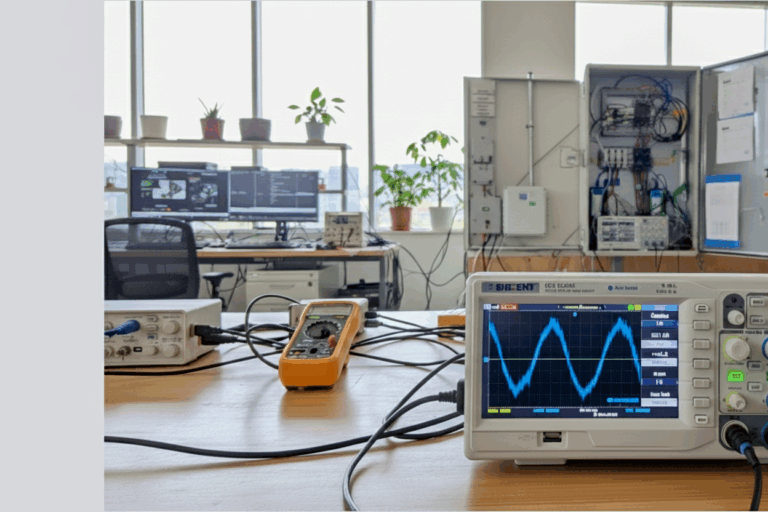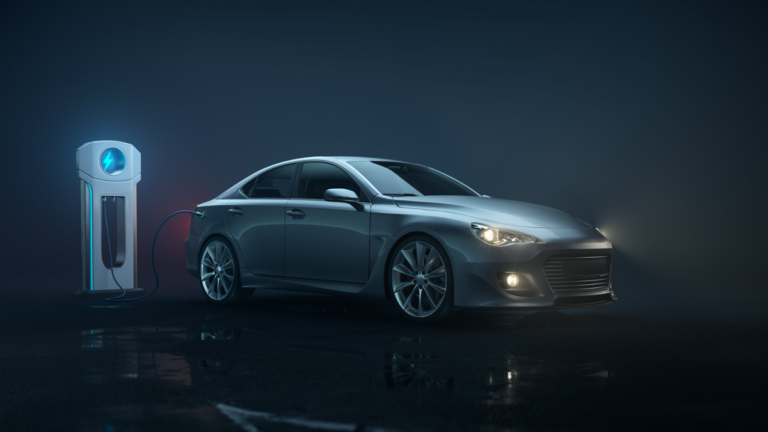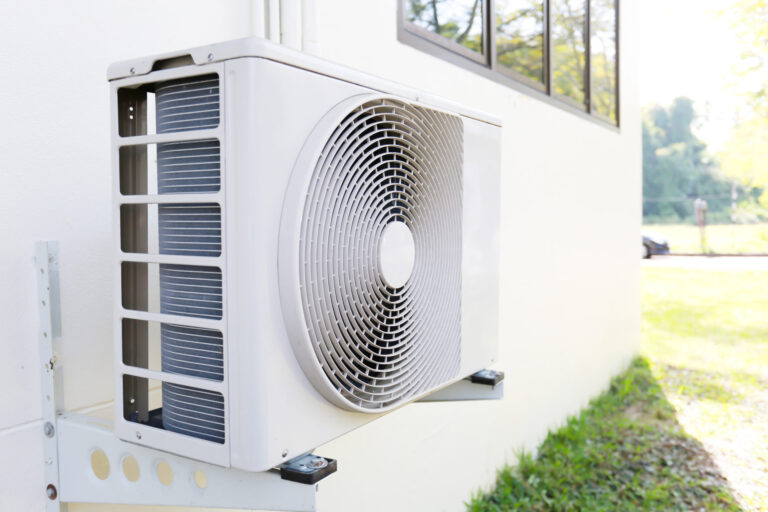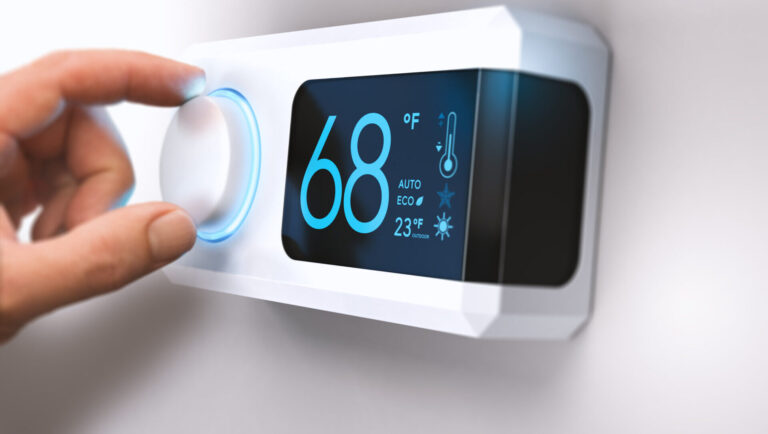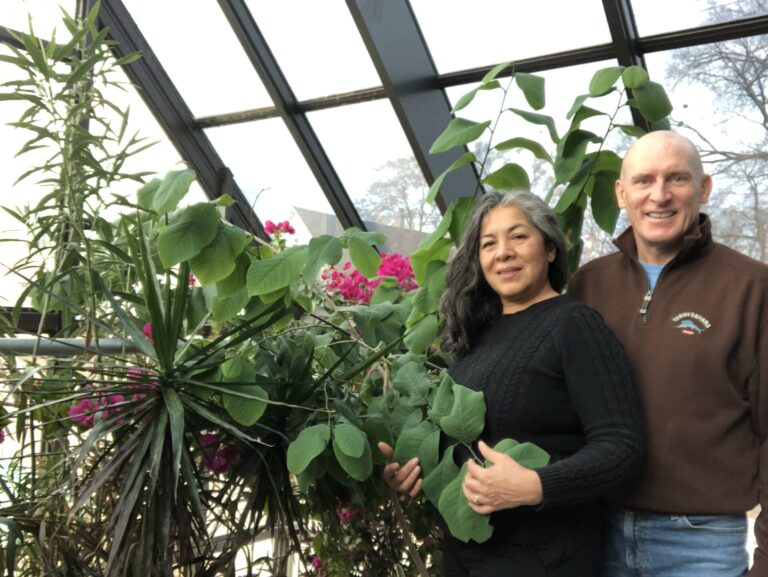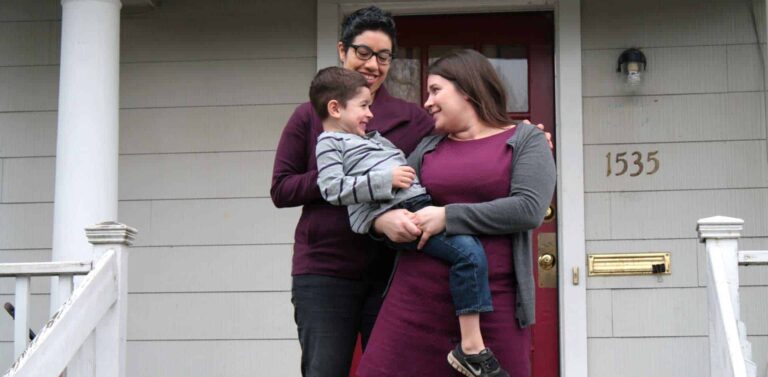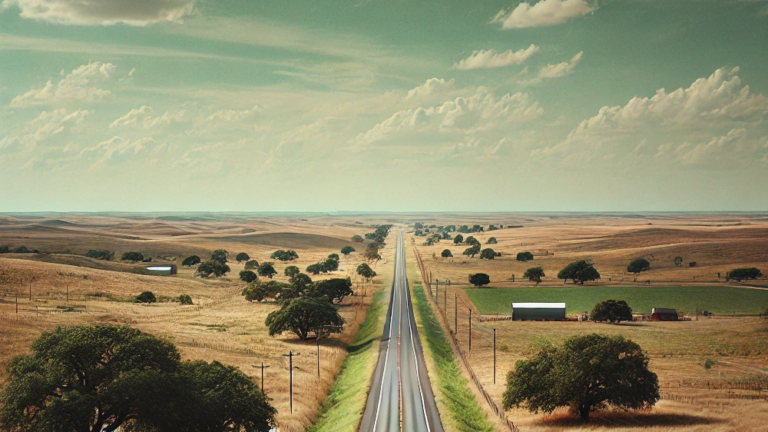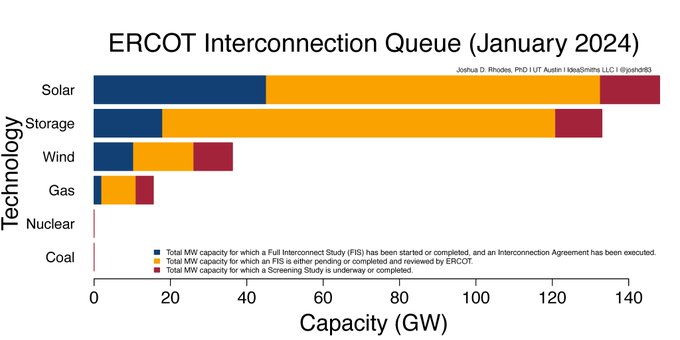June 22, 2022
By Cavan Merski, data analyst, Pecan Street
The ERCOT power grid is back in the news. Texas experienced its hottest May on record and June has seen consistent record-breaking temperatures as well. ERCOT has been busy trying to balance extremely high grid demand with various electric generation plant outages. On June 12, ERCOT recorded its highest ever grid demand of over 75GW. That record only lasted one week before grid demand climbed to more than 76 GW on June 20.
The good news is that solar and wind generation has risen to the task, with generation often exceeding day ahead estimates and contributing 37% of total grid power during the June 12 record peak. But these resources have also experienced record curtailments coinciding with high geographic price disparities. For clean energy to expand (and for Texas to reap all the potential benefits of emission-free electricity), ERCOT must invest in transmission lines to carry the cheapest and lowest emission power to its demand centers and expand distributed energy resources in areas with high congestion, particularly the greater Houston area.
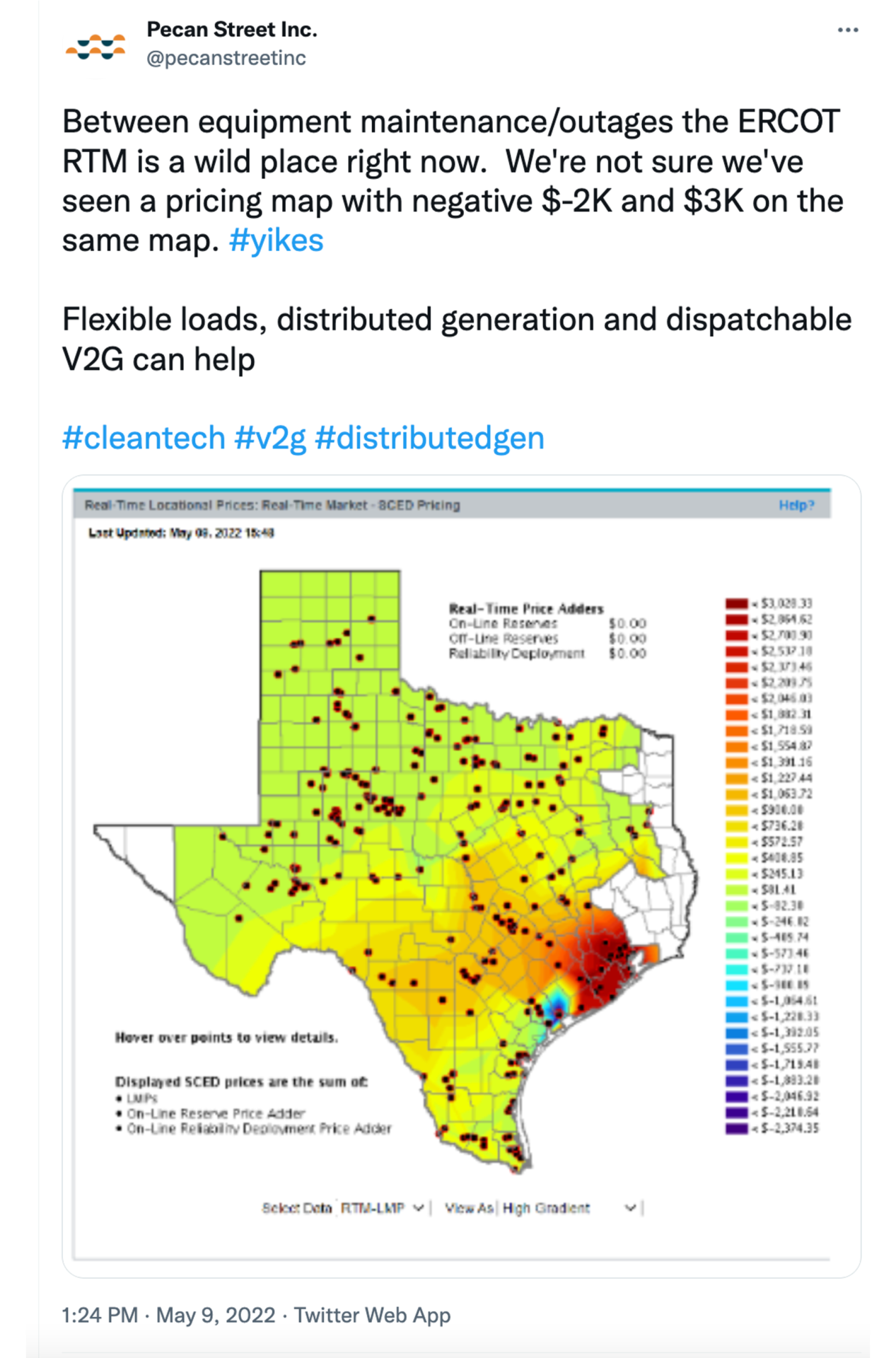 Record high temperatures pushing the ERCOT grid to its limits is nothing new. However, record curtailments of wind and solar power, as we saw this spring, are a growing problem. Curtailing power when prices are peaking in some nodal markets shows that simply installing more generation – whether it’s solar, wind, or natural gas – isn’t enough to fix Texas’ grid problem. When generation sources aren’t available due to maintenance, unplanned outages, or weather, the grid needs as much flexibility as possible to avoid unnecessarily high prices and outages.
Record high temperatures pushing the ERCOT grid to its limits is nothing new. However, record curtailments of wind and solar power, as we saw this spring, are a growing problem. Curtailing power when prices are peaking in some nodal markets shows that simply installing more generation – whether it’s solar, wind, or natural gas – isn’t enough to fix Texas’ grid problem. When generation sources aren’t available due to maintenance, unplanned outages, or weather, the grid needs as much flexibility as possible to avoid unnecessarily high prices and outages.
Grid congestion can be relieved on the transmission side by building more long-distance transmission capacity. We can better meet distribution system needs by adding distributed energy resources (DERs) to the grid where they’re needed most. Both solutions are vital to incorporating more renewable generation onto the ERCOT grid to maximize reliability, increase power affordability, and continue reducing GHG emissions and air pollution.
Wind and Solar Curtailment is a Growing Problem
Texas became a leader in renewable deployment by connecting windy areas like the North Texas Panhandle and sunny areas like West Texas with its major cities in the Central and Eastern parts of the state. This was accomplished by building the state-funded Competitive Renewable Energy Zone( CREZ) transmission lines, which led to an explosion of low-cost, abundant Texas wind power. The CREZ lines were completed in 2013 and today Texas boasts more than double the wind capacity of any other state and more than all but four countries. Increasingly, however, solar and wind power are curtailed; their power is wasted because it can’t be transported to where it’s needed.
On May 13, for example, fossil fuel plant outages coincided with a scorching weekend, which led ERCOT to make conservation pleas to its electricity customers. Fortunately, wind and solar had strong production and no rolling blackouts were required, but this was another reminder of the frequent strains on the ERCOT grid and that fossil-fueled power generation is also intermittently unavailable. Curtailments traditionally peak in the spring and fall when wind and sunshine are abundant but mild temperatures keep overall grid demand lower. Spring 2022 was notable because the amount of curtailed solar doubled from 2021and was more than five times what was curtailed in 2020. The majority of ERCOT’s solar power is generated in West Texas and relies on transmission to reach load centers.
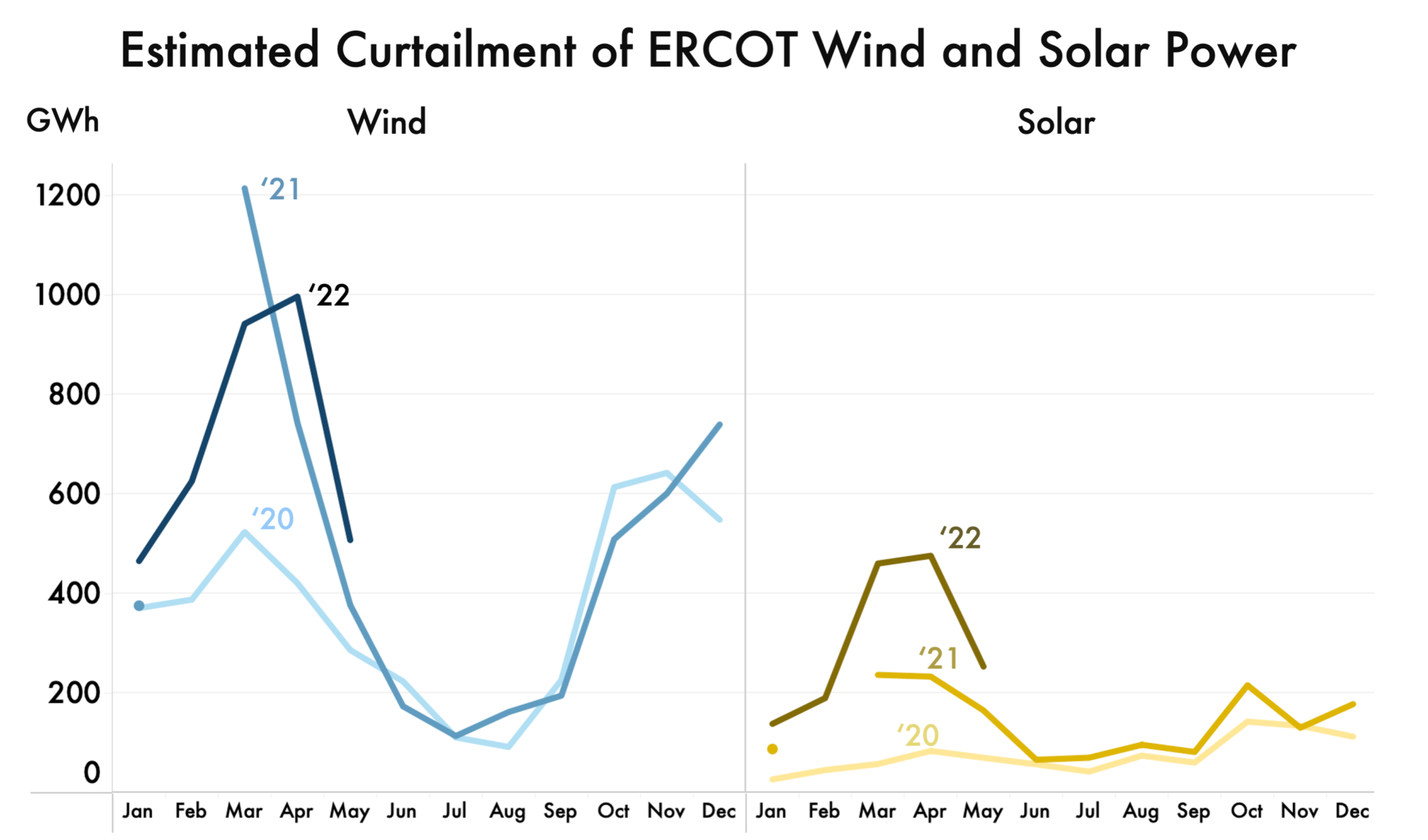 Even as ERCOT has been setting new total grid demand records this June, solar power has been curtailed by as much as 40% of its daily forecast total.
Even as ERCOT has been setting new total grid demand records this June, solar power has been curtailed by as much as 40% of its daily forecast total.
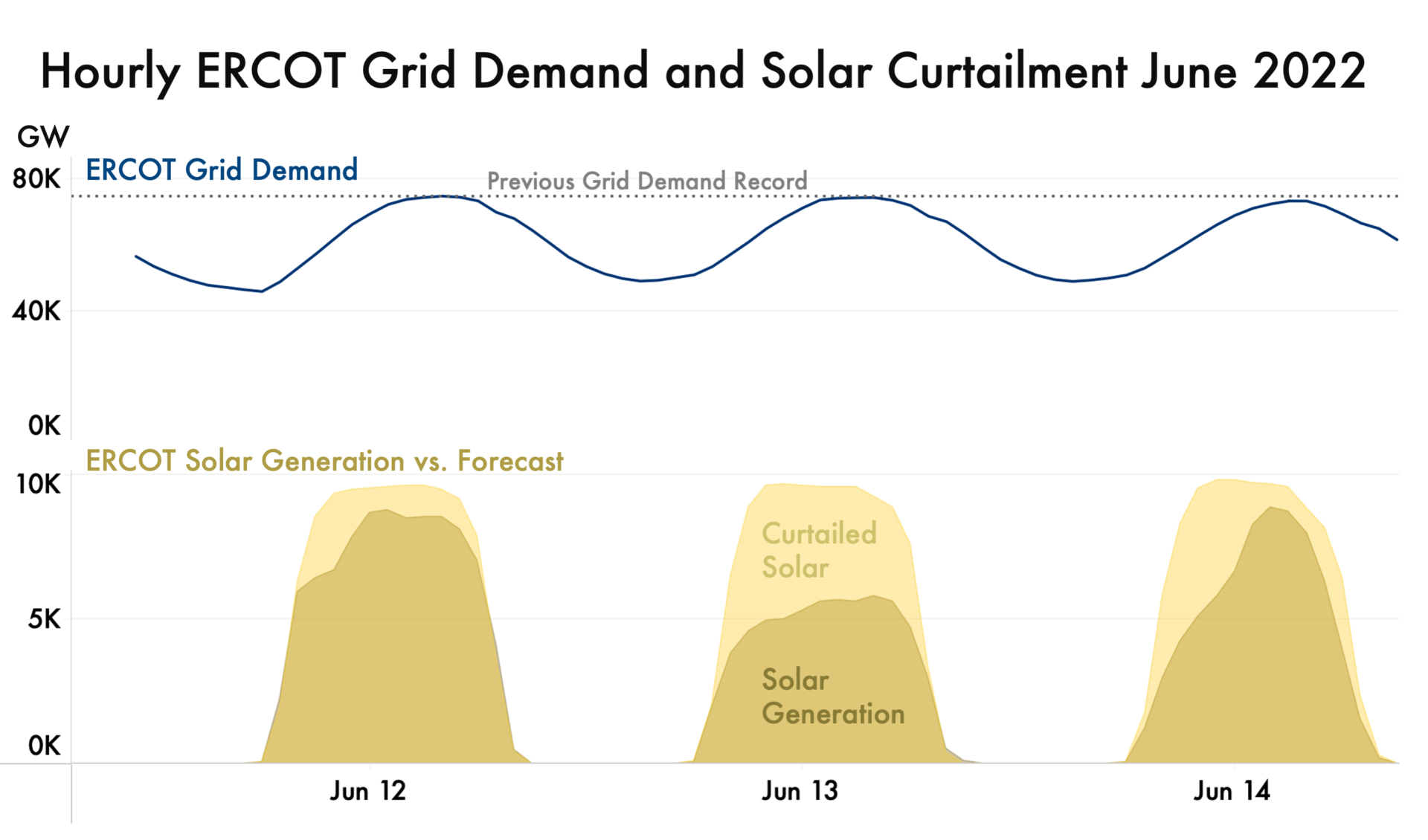 Transmission lines have different sizes, and the largest ones are like multilane highways that can support many vehicles at a time. If traffic on the highway is at a standstill, there’s no way for any more cars to drive from Point A to Point B. When demand exceeds the capacity of local transmission lines, there is no way to get enough power through the lines to meet the need, even when power is available. This isn’t just about wind and solar, either. If existing generation goes down unexpectedly, there might not be an alternative path to connect other generation to the loads served by a power plant that has gone offline due to equipment failure.
Transmission lines have different sizes, and the largest ones are like multilane highways that can support many vehicles at a time. If traffic on the highway is at a standstill, there’s no way for any more cars to drive from Point A to Point B. When demand exceeds the capacity of local transmission lines, there is no way to get enough power through the lines to meet the need, even when power is available. This isn’t just about wind and solar, either. If existing generation goes down unexpectedly, there might not be an alternative path to connect other generation to the loads served by a power plant that has gone offline due to equipment failure.
Unlike natural gas, which is experiencing significant price increases in 2022, solar and wind have no fuel costs. Wasting low-cost electricity while pushing through higher-cost power increases the overall cost of power to consumers.
Continued Utility-Scale Renewable Energy Development Depends on Transmission Investment
Abundant sunshine and wind in Texas continue to spur solar, wind, and now storage development. Continued curtailment caused by lack of adequate transmission infrastructure will eventually tamp developer interest, costing Texans jobs and low-cost energy. Transmission lines can take upwards of 5 years to design and build. Building and connecting wind and solar farms usually take about 2 years. This means that the bottlenecks we see from congested transmission and curtailment are bound to persist for years to come and could constrain even more renewable energy projects as they are interconnected in the future if our policymakers don’t take action quickly to address this very solvable problem. One of the main benefits of ERCOT’s grid independence is that Texas is, in theory, able to build out more transmission quickly without federal review or funding.
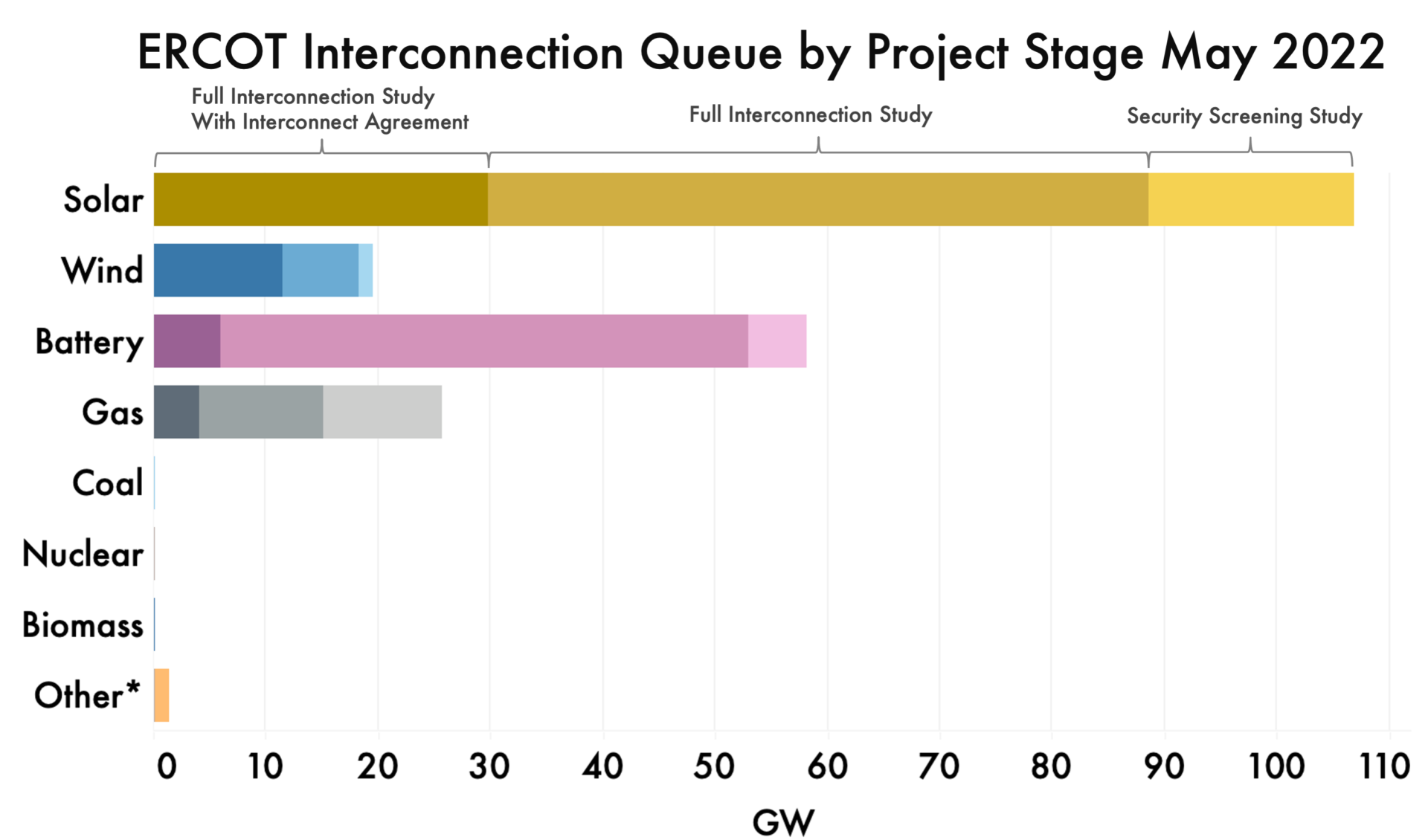
DERs Can Relieve Grid Congestion Quickly & Cleanly
Distributed energy resources (DERs) offer an alternative form of relief from congested transmission lines. DERs are electricity-producing resources or controllable loads that are connected to a local distribution system or to a host facility within the local distribution system.
DERs include residential or community solar, demand response capability, and batteries. Since DERs are on the same distribution system as the loads they serve, they don’t clog up long-distance transmission lines.
Building transmission will allow more renewable energy to power loads across the state, but DERs can relieve grid stress precisely at its most congested points as well. For example, if current transmission lines can’t connect a suburb of Dallas with a wind farm in West Texas, a nearby gas peaker plant could be put online to serve that load. But if homes in that community add solar power, they can relieve peak demand and eliminate the need for the additional gas plant to come online. This demand-side solution also frees up existing transmission by allowing more utility-scale wind and solar to serve loads across the state instead of being curtailed.
Residential electric demand is expected to grow significantly as the electric vehicle transition plays out over the next decade. Additionally, as more research finds that natural gas stoves in homes are far worse for our health than previously thought, electric stoves and more efficient electric heat pumps for space and water heating are also driving residential load growth. The increased demand, spurred by increasingly extreme weather, a growing Texas population, and electrification of the transportation and building sectors, can be met most affordably and reliably with combined wind+storage and solar+storage generation paired with better transmission as well as DERs co-located with areas of high demand.
DER Solutions Need More Development and Enabling Policies
DER solutions are underdeveloped in the ERCOT market, and there are some steps that could help tap their potential.
The first is to create rules that enable viable participation by aggregation entities. ERCOT currently has rules focused around loads being bid into the market, but these don’t take advantage of the fact that from a grid balancing perspective, avoiding load can be every bit as effective as turning on generation.
There are currently zero permitted aggregated load resources registered with ERCOT. There are some demand response programs, usually in conjunction with Retail Electric Providers, co-ops, or municipal utilities. But these programs get activated to avoid transmission costs. They are not bid into the nodal market the same as a power plant. The current policies are written such that the aggregated load resource (ALR) can only be a load, which would preclude the use of stationary residential batteries or V2G from injecting power onto the grid.
Next, the DERs themselves need more standardization and compatibility. For various reasons, the communication and controls of most HVAC control, energy storage inverters, solar systems, vehicle charging, and other “connected energy” products are proprietary to the manufacturer. Even in industries where there has been an attempt at standardization (IEEE 1547/SUNSPEC for inverters as an example), there are still important differences that make plug-and-play operation difficult. Where there hasn’t been standardization (thermostats for example), plug-and-play operation with a system aggregator is impossible. There are a number of startups working in this space, but until there is a uniform common interface/common information module, innovation and progress will be slow.
Lastly, we would be remiss if we didn’t stress the importance of energy efficiency in reducing grid demand and affordably relieving grid congestion. In 1999, Texas became the first state in the nation to establish an Energy Efficiency Resource Standard that required investor-owned utilities to achieve a specified amount of annual energy efficiency savings. How, however, Texas has the weakest energy efficiency standards of any state and is well behind its own efficiency goals because there is little drive at the state level to meet them. A recent Department of Energy study found that Texas could save 19% of total annual energy usage and reduce electric bills for the state’s low-income households by 20% through the implementation of common-sense energy efficiency measures over the next 10 years.









